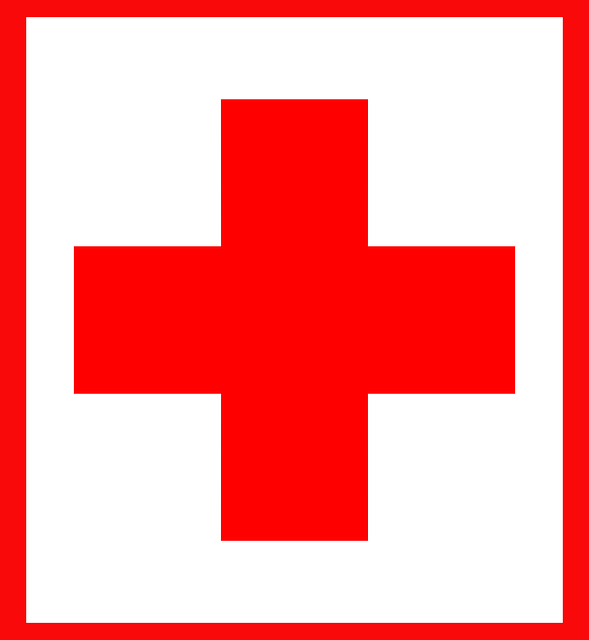Title Page
-
Client/Site
-
Conducted on
-
Prepared by
-
Location
Checklist for Establishing a PPE Program
Checklist for Establishing a PPE Program
-
Identify steps taken to assess potential hazards in every employee’s work space and in workplace
operating procedures. -
Identify appropriate PPE selection criteria.
-
Identify how you will train employees on the use of PPE, including:
-
What PPE is necessary
-
When PPE is necessary
-
How to properly inspect PPE for wear or damage
-
How to properly put on and adjust the fit of PPE
-
How to properly take off PPE
-
The limitations of the PPE
-
How to properly care for and store PPE.
-
Identify how you will assess employee understanding of PPE training.
-
Identify how you will enforce proper PPE use.
-
Identify how you will provide for any required medical examinations.
-
Identify how and when to evaluate the PPE program.
Checklist On Need For PPE
EYES
-
Do your employees perform tasks, or work near employees who perform tasks, that might produce airborne dust or flying particles?<br><br>Typical Operations Of Concern<br>Sawing, cutting, drilling, sanding, grinding, hammering, chopping,abrasive blasting, punch press operations, etc.
-
Do your employees handle, or work near employees who handle, hazardous liquid chemicals or encounter blood splashes? <br><br>Typical Operations Of Concern<br>Pouring, mixing, painting, cleaning,syphoning, dip tank operations, dental and health care services, etc.
-
Are your employees’ eyes exposed to other<br>potential physical or chemical irritants? <br><br>Typical Operations Of Concern<br>Battery charging, installing fiberglass insulation, compressed air or gas operations, etc
-
Are your employees exposed to intense light or lasers?<br><br>Typical Operations Of Concern<br>Welding, cutting, laser operations, etc.
FACE
-
Do your employees handle, or work near employees who handle, hazardous liquid chemicals? <br><br>Typical Operations Of Concern<br>Pouring, mixing, painting, cleaning,syphoning, dip tank operations, etc.
-
Are your employees’ faces exposed to<br>extreme heat? <br><br>Typical Operations Of Concern<br>Welding, pouring molten metal, smithing, baking, cooking, drying, etc.
-
Are your employees’ faces exposed to other potential irritants? <br><br>Typical Operations Of Concern<br>Cutting, sanding, grinding, hammering,chopping, pouring, mixing, painting,cleaning, syphoning, etc.
HEAD
-
Might tools or other objects fall from above and strike your employees on the head?<br><br>Typical Operations Of Concern<br>Work stations or traffic routes located under catwalks or conveyor belts,construction, trenching, utility work,<br>etc.
-
Are your employees’ heads, when they stand or bend, near exposed beams, machine parts, pipes, etc.? <br><br>Typical Operations Of Concern<br>Construction, confined space operations, building maintenance, etc.
-
Do your employees work with or near exposed electrical wiring or components? <br><br>Typical Operations Of Concern<br>Building maintenance; utility work; construction; wiring; work on or near communications, computer, or other high tech equipment; arc or resistance welding; etc.
FEET
-
Might tools, heavy equipment, or other objects roll, fall onto, or strike your employees’ feet? <br><br>Typical Operations Of Concern<br>Construction, plumbing, smithing, building maintenance, trenching, utility work, grass cutting, etc.
-
Do your employees work with or near exposed electrical wiring or components? <br><br>Typical Operations Of Concern<br>Building maintenance; utility work; construction; wiring; work on or near communications, computer, or other high tech equipment; arc or resistance welding; etc.
-
Do your employees handle, or work near employees who handle, molten metal?<br><br>Typical Operations Of Concern<br>Welding, foundry work, casting,smithing, etc.
-
Do your employees work with explosives or in explosive atmospheres? <br><br>Typical Operations Of Concern<br>Demolition, explosives manufacturing, grain milling, spray painting, abrasive blasting, work with highly flammable materials, etc.
HANDS
-
Do your employees’ hands come into contact with tools or materials that might scrape, bruise, or cut?<br><br>Typical Operations Of Concern<br>Grinding, sanding, sawing, hammering, material handling, etc.
-
Do your employees handle chemicals that might irritate skin, or come into contact with blood? <br><br>Typical Operations Of Concern<br>Pouring, mixing, painting, cleaning,syphoning, dip tank operations, health care and dental services, etc.
-
Do work procedures require your employees to place their hands and arms near extreme heat? <br><br>Typical Operations Of Concern<br>Welding, pouring molten metal, smithing, baking, cooking, drying, etc.
-
Are your employees’ hands and arms placed near exposed electrical wiring or components? <br><br>Typical Operations Of Concern<br>Building maintenance; utility work; construction; wiring; work on or near communications, computer, or other high tech equipment; arc or resistance welding; etc.
BODY
-
Are your employees’ bodies exposed to irritating dust or chemical splashes?<br><br>Typical Operations Of Concern<br>Pouring, mixing, painting, cleaning, syphoning, dip tank operations,machining, sawing, battery charging,<br>installing fiberglass insulation,compressed air or gas operations, etc
-
Are your employees’ bodies exposed to sharp or rough surfaces? <br><br>Typical Operations Of Concern<br>Cutting, grinding, sanding, sawing, glazing, material handling, etc.
-
Are your employees’ bodies exposed to extreme heat? <br><br>Typical Operations Of Concern<br>Welding, pouring molten metal smithing, baking, cooking, drying, etc.
-
Are your employees’ bodies exposed to acids or other hazardous substances? <br><br>Typical Operations Of Concern<br>Pouring, mixing, painting, cleaning, syphoning, dip tank operations, etc.
HEARING
-
Are your employees exposed to loud noise from machines, tools, music systems, etc.? <br><br>Typical Operations Of Concern<br>Machining, grinding, sanding, work near conveyors, pneumatic equipment, generators, ventilation fans, motors, punch and brake presses, etc.
Checklist for Training Employees
Eye and Face Protection
-
Train your employees to know
-
Why eye protection is necessary, i.e., the workplace hazards that threaten their eyes.
-
How the eye protection will protect them.
-
The limitations of the eye protection.
-
When they must wear the eye protectors.
-
How to put the protective eyewear on properly.
-
How to adjust straps and other parts for a comfortable and effective fit.
-
How the protective eyewear fits over or contains an employee’s corrective lenses.
-
How to identify signs of wear such as:<br>• Chipped, scratched, or scraped lenses;<br>• Loss of elasticity or fraying of head bands.
-
How to clean and disinfect the safety eyewear.
Head Protection
-
Train your employees to know . . .
-
Why head protection is necessary, i.e., the workplace hazards that threaten their heads.
-
How the head protection will protect them.
-
The limitations of the head protection.
-
When they must wear the head protection.
-
How to wear the protective head gear properly.
-
How to adjust straps and other parts for a comfortable and effective fit.
-
How to identify signs of wear such as:
-
• Cracked, torn, frayed, or otherwise deteriorated suspension systems;
-
• Deformed, cracked, or perforated brims or shells; and
-
• Flaking, chalking, or loss of surface gloss.
-
How to clean and disinfect the hard hats you provide for them
Foot and Leg Protection
-
Train your employees to know . . .
-
Why foot or leg protection is necessary, i.e., the workplace hazards that threaten their feet or legs.
-
How the equipment you provide will protect them.
-
The limitations of the foot or leg protection.
-
When they must wear the protective leggings, guards,or shoes.
-
How to properly put on the protective equipment.
-
How to adjust straps, laces, and other parts for a comfortable and effective fit.
-
How to identify signs of wear such as:
-
• Scuffed, cracked, or lacerated uppers;
-
• Signs of separation between soles and uppers,
-
• Holes or cracks in soles or heels, or
-
• Metal embedded in heels or soles of electrical hazard, safety-toe shoes.
-
How to clean and maintain the leg and foot protection you provide for them.
Hand and Arm Protection
-
Train your employees to know . . .
-
Why hand and arm protection is necessary, i.e., the workplace hazards that threaten their hands and arms.
-
How the protective gloves and sleeves will protect them.
-
The limitations of the protective equipment you’ve supplied.
-
When they must wear the gloves and sleeves.
-
How to properly put on the gloves and sleeves.
-
How to ensure a comfortable and effective fit.
-
How to identify signs of wear, such as:
-
• Cracks, scrapes, or lacerations,
-
• Thinning or discoloration, and
-
• Break through to the skin.
-
How to clean and disinfect the nondisposable protective gloves and sleeves
Body Protection
-
Why protective clothing is necessary, i.e., the workplace hazards that threaten their bodies.
-
How the protective clothing will protect them.
-
The limitations of the body protection.
-
When they must wear the protective clothing.
-
How to properly put on the protective clothing.
-
How to adjust parts for a comfortable and effective fit
-
How to identify signs of wear, such as:
-
• Rips, tears, scuffs, and
-
• Loss of elasticity in tight fitting parts.
-
How to clean and disinfect the protective clothing you provide for them.
Hearing Protection
-
Train your employees to know . . .
-
Why hearing protection is necessary, i.e., the workplace hazards that threaten their hearing.
-
How the ear plugs or earmuffs will protect them.
-
The limitations of the hearing protection.
-
When they must insert or wear the hearing protectors.
-
How to adjust earmuff parts for a comfortable and effective fit, or form the ear plugs to fit their ears.
-
How special earmuffs fit over an employee’s corrective lenses.
-
How to clean and disinfect the hearing protection you provide for them.
Completion
-
General Comments
-
Prepared by












